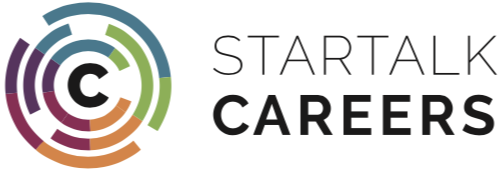Interview Questions Help:
1) COLLABORATION – How do you collaborate with stakeholders to communicate how effective learning experiences promote lifelong language learning?
2) COLLABORATION – How do you connect with local and global communities to support and encourage language and culture learning?
3) COLLABORATION – How do you discuss student performance goals and outcomes of the class/course/program with all stakeholders?
4) COLLABORATION – How do you partner with school-based professionals to support the learning of your students?
5) COLLABORATION – How do you provide a variety of vehicles for regular two-way communication about the class/course/program?
6) COLLABORATION – How does your collaboration with stakeholders support student learning?
7) ENVIRONMENT – How do you build appropriate relationships with your students to promote a safe and positive learning environment?
8) ENVIRONMENT – How do you collaborate with your students to promote a safe and supportive learning environment?
9) ENVIRONMENT – How do you create a classroom environment that is culture-rich and encourages use of the target language?
10) ENVIRONMENT – How do you create a safe and supportive learning environment to prepare for student learning?
11) ENVIRONMENT – How do you maximize the organization of the physical environment to support the performance objectives?
12) ENVIRONMENT – How do you work with your students’ parents and school administrators to communicate and clarify the expectations for the learning environment?
13) LEARNING TOOLS – How do you and your students access and use learning tools in a manner respectful of authorship and ownership?
14) LEARNING TOOLS – How do you and your students capitalize on a variety of learning tools to advance student learning?
15) LEARNING TOOLS – How do you and your students use tools to document, track, and reflect on performance over time?
16) LEARNING TOOLS – How do you research and collaborate with colleagues to identify tools to facilitate your work?
17) LEARNING TOOLS – How do you use a variety of learning tools that facilitate the understanding of the perspectives behind cultural products and practices?
18) LEARNING TOOLS – How do you use a variety of learning tools to help learners ACCESS language, culture and content to meet performance objectives?
19) LEARNING TOOLS – How do you use a variety of learning tools to help learners PRODUCE language, interact with culture and content to meet performance objectives?
20) PERFORMANCE & FEEDBACK – How do you and your students use performance and feedback to advance student learning?
21) PERFORMANCE & FEEDBACK – How do you employ a variety of feedback strategies designed to assist the learner in growing toward the target?
22) PERFORMANCE & FEEDBACK – How do you provide students with opportunities to set and monitor their own goals for language performance and cultural competence that are consistent with or exceed course proficiency targets?
23) PERFORMANCE & FEEDBACK – How do you routinely use internal and external assessment data to modify learning experiences?
24) PERFORMANCE & FEEDBACK – How do your students demonstrate growth through performances that are reflective of their learning experiences?
25) PERFORMANCE & FEEDBACK – How does your grading system reflect multiple measures and an emphasis on language performance?
26) PLANNING – How do you ensure that your planning accommodates the needs of heritage/native speakers and identified exceptional learners, as well as struggling or accelerated learners not officially identified?
27) PLANNING – How do you identify and select appropriate resources that allow your students to access, evaluate and use authentic materials?
28) PLANNING – How do you plan for lessons that contain learning experiences designed to keep all students engaged all of the time?
29) PLANNING – How do you plan learning experiences based on local curriculum and state and national standards?
30) PLANNING – How do you plan learning experiences that address the unique needs and interests of you students?
31) PLANNING – How do you plan lessons containing activities that are contextualized, connect to prior learning, and require attention to meaning?
32) PLANNING – How do you plan opportunities for your students to set and monitor their own goals for language performance and cultural competence that are consistent with or exceed course proficiency targets?
33) PLANNING – How do you use the backward design process to plan lessons that lead students to meet the unit performance objectives?
34) PLANNING – How do you use units based on proficiency targets and backward design principles?
35) PLANNING – How does your planning of learning experiences prepare for student learning?
36) PROFESSIONALISM – How do you give back to the profession in various ways?
37) PROFESSIONALISM – How do you maintain high levels of linguistic competence in both the target language and English?
38) PROFESSIONALISM – How do you maintain the highest standards of professional conduct in your community, classroom and professional affiliations?
39) PROFESSIONALISM – How do you participate in professional development opportunities both in-district and beyond throughout the school year and in the summer?
40) PROFESSIONALISM – How do you practice being a reflective practitioner?
41) PROFESSIONALISM – How does your continued growth as a professional support student learning?
42) THE LEARNING EXPERIENCE – How do you and your students demonstrate respect for individuals, rules, routines, and procedures?
43) THE LEARNING EXPERIENCE – How do you ensure that students receive comprehensible input?
44) THE LEARNING EXPERIENCE – How do you provide meaningful learning experiences that advance student learning?
45) THE LEARNING EXPERIENCE – How do you provide opportunities for students to engage in cultural observation and analysis?
46) THE LEARNING EXPERIENCE – How do you provide opportunities for your students to acquire language in meaningful contexts?
47) THE LEARNING EXPERIENCE – How do you provide opportunities for your students to become more effective communicators?
48) THE LEARNING EXPERIENCE – How do you share the sequence of learning experiences with your students?
49) THE LEARNING EXPERIENCE – How do you use the daily performance objectives to capture your students’ energy and commitment?
